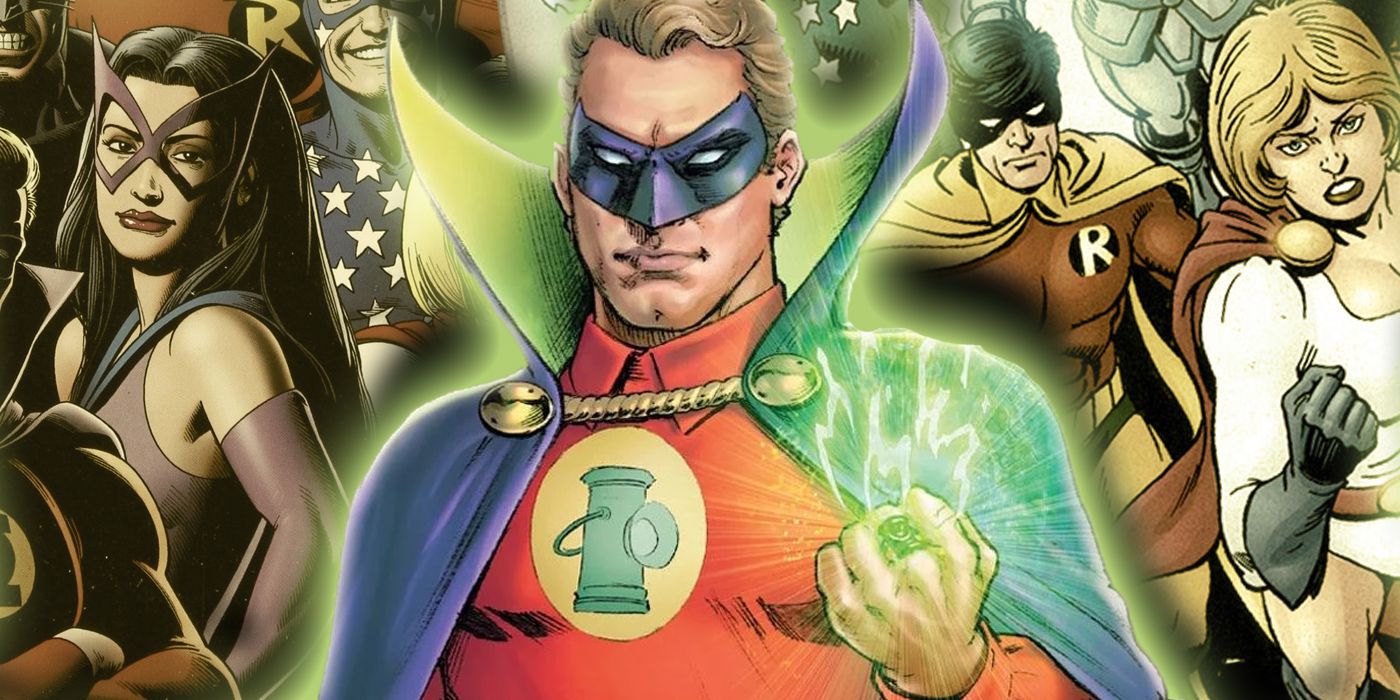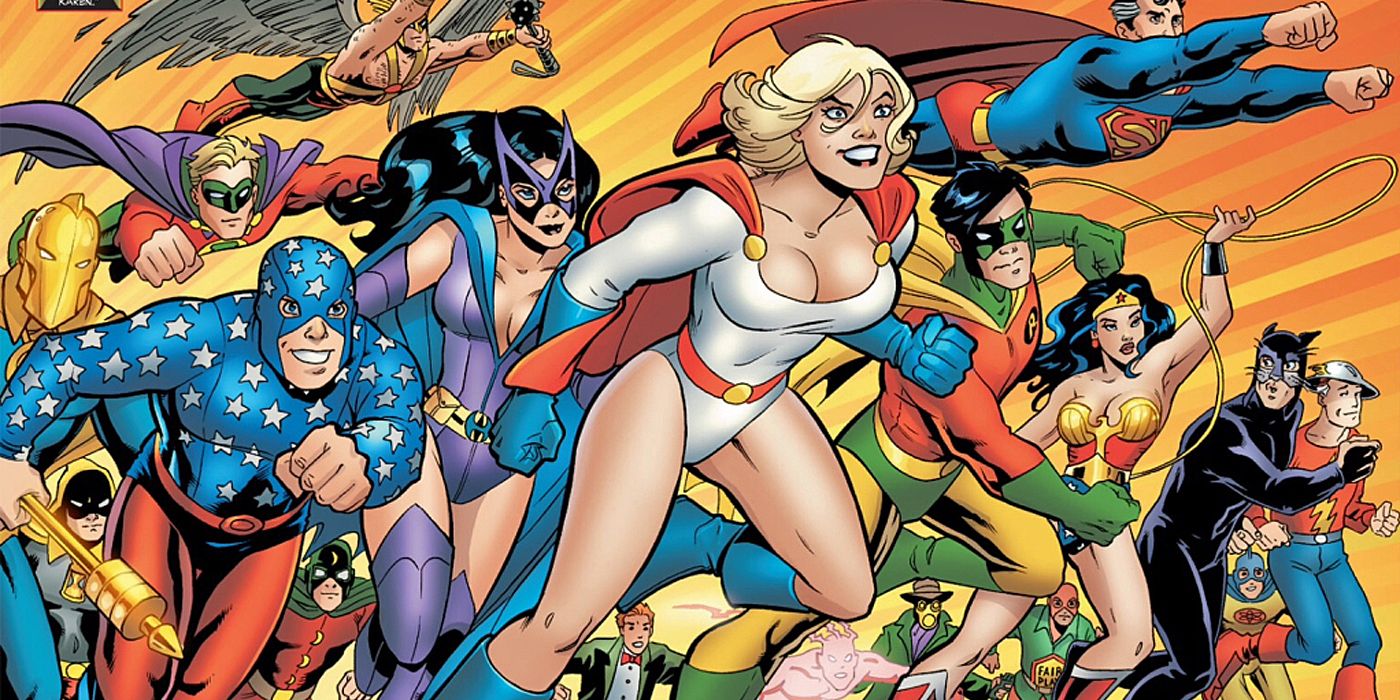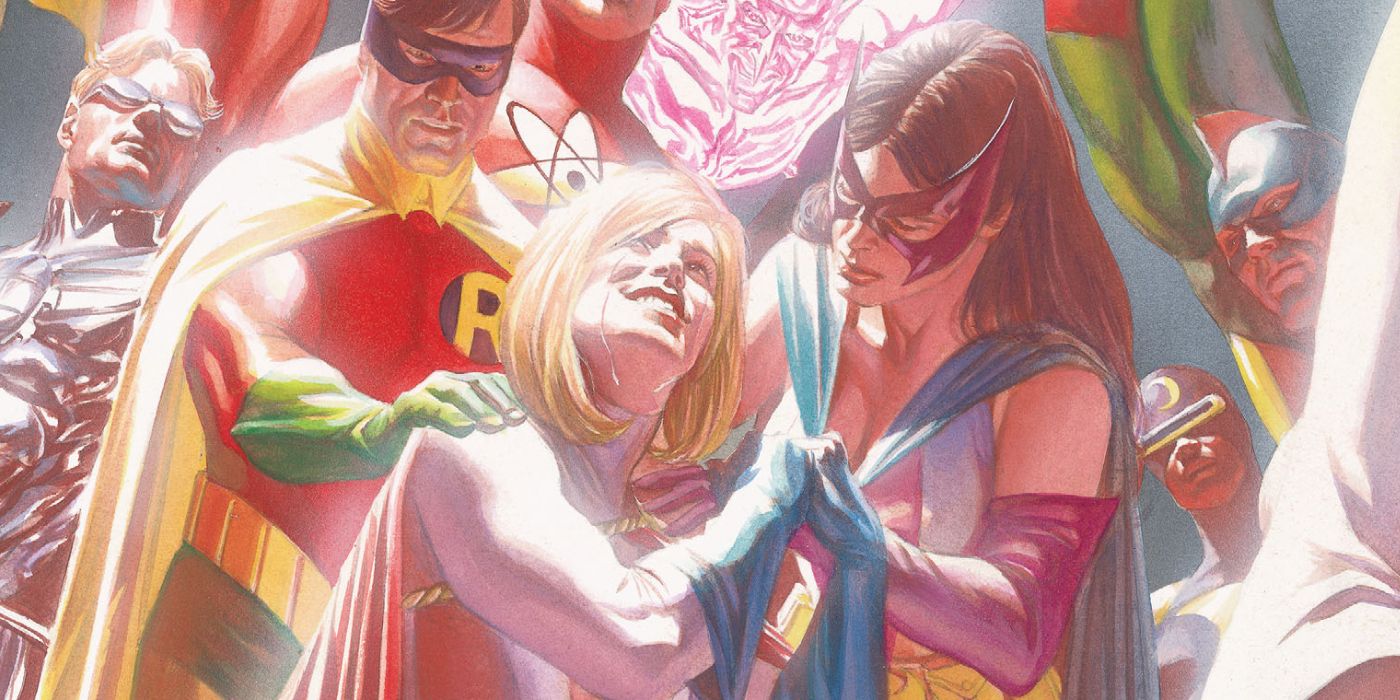
WARNING: The following article contains spoilers for Infinite Frontier #6, on sale now from DC Comics.
Infinite Frontier #6 (by Joshua Williamson, Xermanico, Romulo Fajardo Jr. and Tom Napolitano) ended its storyline with major revelations about the DC Omniverse. The biggest reveal occurred in the epilogue that confirmed the return of the pre-Crisis multiverse, which has significant implications about the way this new omniverse works. Specifically, it seems to confirm that there is no one single multiverse in existence but several, effectively giving new meaning to the phrase "infinite Earths."
Exactly how many multiverses exist in the larger omniverse is most likely going to be addressed in the upcoming Justice Incarnate miniseries out later this year. There are, however, four multiverses DC has had over the course of its history that could very well be explored during the Infinite Frontier era. These include the original pre-Crisis multiverse, the post-Infinite Crisis multiverse, the post-Flashpoint multiverse, and the Elseworlds multiverse.

Before there was even a multiverse, all of DC history started on a world that eventually became known as Earth-Two. This was the world where Superman first appeared in 1938, Batman in 1939 and many of the Justice Society heroes in 1940. Wonder Woman made her debut here in 1941, the same year the Justice Society of America got together for the first time. The era between 1938 and 1955 became known as DC's Golden Age, in which many of its storylines saw DC's heroes fight the Axis powers and many other threats during World War II.
By 1955, many of DC's Golden Age heroes got phased out in favor of newer heroes that came to define the Silver Age, such as Barry Allen as the new Flash and Hal Jordan as the new Green Lantern. Many other heroes that appeared during the Golden Age like Batman, Superman, Wonder Woman, Aquaman, and Green Arrow got updated histories. It wasn't until Barry Allen pushed the limits of his speed in the classic The Flash #123 story "The Flash of Two Worlds" that the multiverse was first established. From this point forward, Barry's Earth became known as Earth-One and the Golden Age Earth became Earth-Two.
Throughout both the Silver Age and Bronze Age, there were many crossovers between the heroes of Earths One and Two that led to the discovery of an infinite number of other Earths. Some of these included the Crime Syndicate world known as Earth-Three, the Charlton Comics universe known as Earth-Four, the Fawcett Comics universe known as Earth-S, and the Freedom Fighters universe known as Earth-X. Even the real world existed in the pre-Crisis multiverse as Earth-Prime where the real life DC office and editors resided. There were even some pretty wild Earths in the pre-Crisis multiverse that contained many of DC's "what if?" stories like Earth-Two-A, Earth-A and Earth-B. Earth-C was Captain Carrot's universe with Earth-C-Minus being the variation of his world where the anthropomorphic heroes adapted the identities of DC's mainstream heroes.
The pre-Crisis multiverse is the first confirmed multiverse to exist in the larger DC Omniverse. It is even implied that Barry Allen got sent back to the pre-Crisis Earth-One, or at least some variation of it known as Earth-Flash.1 by Pariah. The pre-Crisis multiverse, however, is not be the only multiverse that is eligible for a reappearance in Justice Incarnate and other future stories.

After Crisis on Infinite Earths merged the pre-Crisis multiverse into a single Earth, the multiverse stopped existing for a while. At best, some form of a "multiverse" known as Hypertime existed, but it wasn't a case of whole universes existing in their own "bubbles" like the pre-Crisis multiverse. Instead, Hypertime was a case of different timelines branching out of the main DC timeline -- sort of like branches of a larger tree -- and this was implied to be the home of DC's various Elseworlds. It wasn't until the events of Infinite Crisis that a new official multiverse was created.
The post-Infinite Crisis multiverse resembled the pre-Crisis counterpart in a few key details but it wasn't infinite. It was a much smaller multiverse consisting of only 52 Earths containing both the Elseworlds Earths and Earths resembling some of their pre-Crisis counterparts. Despite being based off of Earth-One, the post-Crisis Earth simply became New Earth in the new multiverse while a new version of Earth-One existed as Earth-1. Similarly, Earth-Two became Earth-2, Earth-Three became Earth-3 and Earth-Four became Earth-4. Some of the pre-Crisis Earths that were originally designated by letters were similarly given numbers. This was true of Earth-S that became Earth-5 and Earth-X that became Earth-10.
As the 2007 weekly series 52 explored, many of these familiar Earths retained strong similarities to their pre-Crisis and Elseworlds counterparts, but were also markedly different in other respects. This was more strongly explored in the 2008 Justice Society of America story arc "Thy Kingdom Come" where Earth-22 and Earth-2 were visited. Earth-22 was designated the Kingdom Come universe, which originally existed as an Elseworld in Hypertime. While Earth-22 retained most of its Elseworld canon, Earth-2 had some very noticeable differences from its pre-Crisis counterpart.
While Earth-2 was aesthetically similar to its pre-Crisis predecessor and had many of the same residents, it also had a slightly different history. For example, this new Earth-2 looked like it was still existing in the 1980s but the year was still 2008. On this Earth-2, Infinity Inc merged with the Justice Society to become Justice Society Infinity. This world's Helena Wayne Huntress and Dick Grayson Robin were also in love with each other in a way they never were pre-Crisis. Similarly, this world's Alan Scott had passed away under mysterious circumstances, which never happened pre-Crisis. This wouldn't be the last time Earth-2 would see changes, however.

After Barry Allen altered New Earth history in Flashpoint, more changes to the multiverse occurred resulting in the creation of yet another new multiverse. Like the post-Infinite Crisis multiverse, this new iteration once again only contained 52 Earths. These Earths consisted of an Elseworlds Earths and Earths resembling their pre-Crisis counterparts. In many cases, they even retained the same numbering as their post-Infinite Crisis counterparts and even managed to retain the same histories as explored in Grant Morrison's Multiversity one-shots. But once again, major changes had occurred.
Most of the changes were noticeable on Earth-0 (formerly New Earth), Earth-1 and Earth-2. While Earth-0 still largely retained its post-Crisis template, its new history was wildly inconsistent and had significant gaps. Earth-1 was similarly still based off of the pre-Crisis Earth-One, but was now a universe that offered darker reinterpretations of Batman and Superman, a more Golden Age approach to Wonder Woman, and radically different takes on both the Teen Titans and Green Lantern.
The Earth that was most radically changed, however, was Earth-2, which was in many ways no longer the Golden Age Justice Society Earth. While this Earth still had many characters in common with its pre-Flashpoint predecessors like Alan Scott, Jay Garrick, Helena Wayne and Kara Zor-L, they did not resemble their predecessors in concept. Both Jay and Alan, for example, were much younger men who were roughly the same age as Kara and Helena. As such, Alan's children -- Jennifer-Lynn Hayden and Todd Rice -- no longer existed. Many other prolific Golden Age characters like The Seven Soldiers of Victory were also either non-existent or replaced with brand new characters.
Post-Death Metal, all of these different multiverses that once existed in isolation now seem to be co-existing within the larger DC Omniverse. It's now implied that these multiverses are bubbles existing inside much bigger bubbles waiting to be explored. As such, there are now multiple Earth-0s, Earth-1s, Earth-2s, Earth-3s and so forth. In Infinite Frontier, only a few of these were briefly visited. Similarly, with a new Earth called Elseworld existing at the center of the new omniverse instead of Earth-0, this seems to imply that many of DC's original Elseworlds will now exist in their own separate multiverse with counterparts existing in other multiverses.
0 Comments